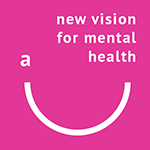From the introduction to an article by Ernest L. Rossi and Kathryn L. Rossi in The Neuropsychotherapist eMagazine:
“Children are naturally curious about their life experiences and learn to play with them in their imagination. Does quantum physics provide a new perspective for the general public as well as serious students of science and natural philosophy that ranges from ancient times to the modern meandering mind of discovery and self-creation?” Ernest Rossi
“Ernest Rossi has been one of the great innovative thinkers of the past 50 years. He and his wife and colleague, Kathryn Rossi, have continued this work together for the past two decades. His prominence began to emerge from his work with the famous psychotherapist and clinical hypnotherapist Milton H. Erickson. Their 8 years of work together in the 1970s produced a set of books and papers that have become seminal volumes in the field of mental health and recovery. Rossi’s books after Erickson’s death have sought to engage our understanding of being human at the cutting edge of science. He was writing about the relevance of gene expression to the practices of psychotherapy and hypnotherapy in the 1990s. Over the past decade the inclusion of quantum physics in his books and lectures has been a steadily developing theme. In his introduction to this series, however, we can see that these ideas entered his thinking long before. We have a lot to do to catch up.
In this article, the first in a series that the Rossi’s are writing especially for The Neuropsychotherapist, they review the evolving perspectives of subatomic particle physics, math, biology, and psychology that we have witnessed over the past century, as they seek to create a new integrated quantum field theory of cosmos, life, stress, and creating a new consciousness. Rossi engages us in his wonderings as he seeks answers to questions such as: Why quantum? Why symmetry? Why chirality? Why stress? Why conflict? Why war? And why does the mirroring hands psychotherapeutic technique enable people to engage with these questions, both explicitly and implicitly? …”
Read more here.



